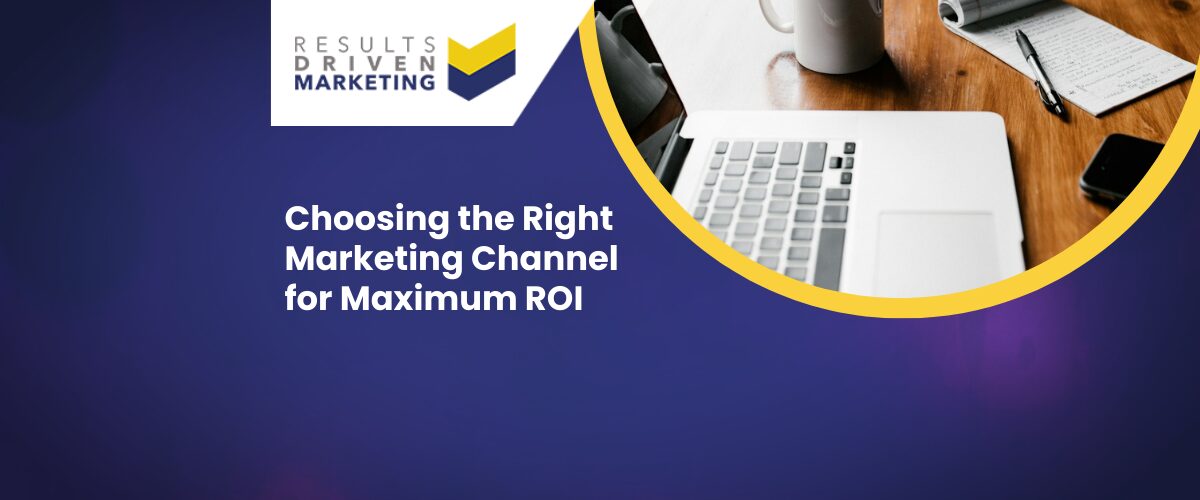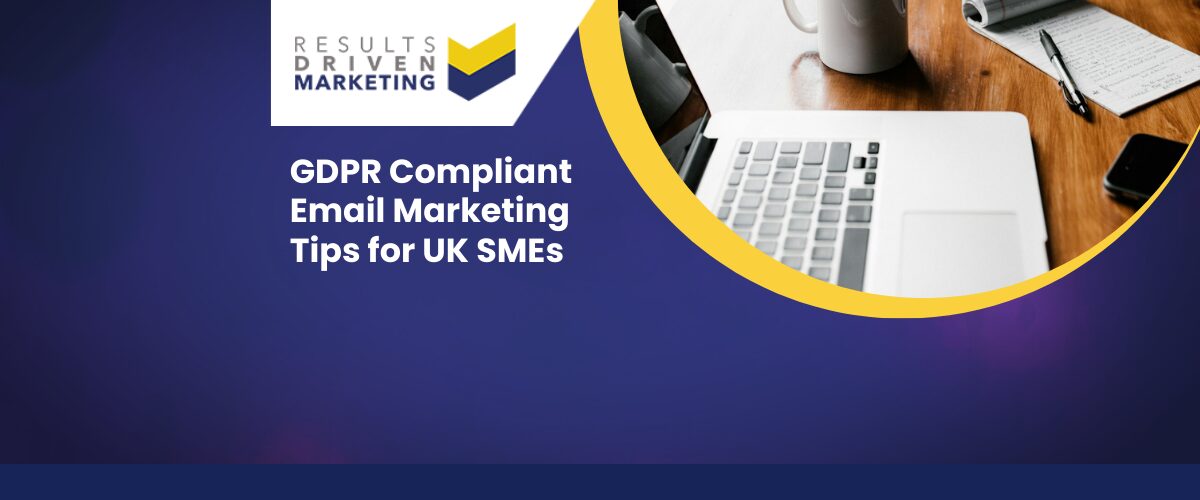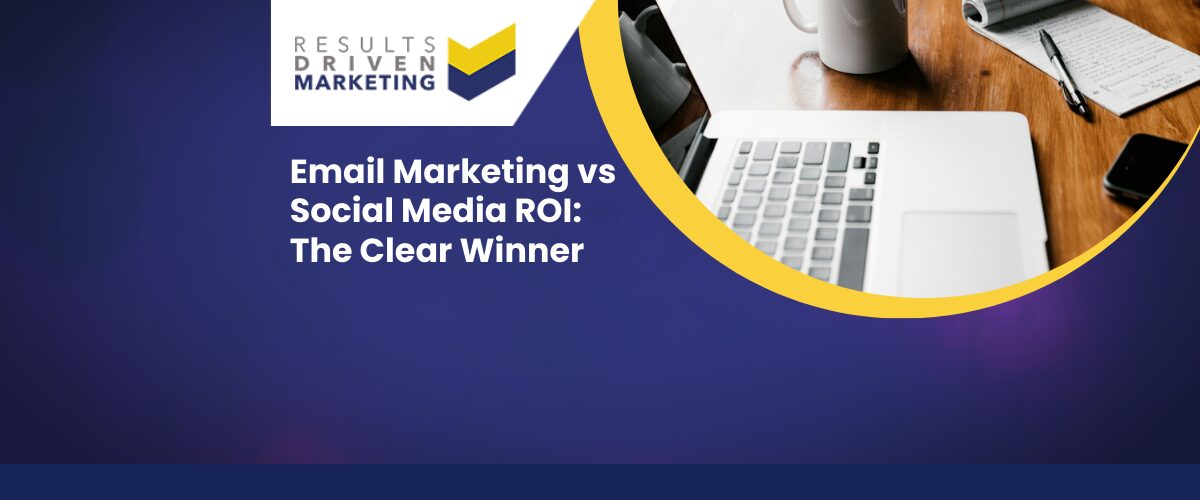
Email, Phone or Post? Choosing the Right Marketing Channel for Maximum ROI
When you’re investing in purchased B2B data, every outreach decision counts—especially when it comes to choosing the right marketing channel. Whether you’re a sales director looking to fill your pipeline, a marketing manager aiming to hit campaign KPIs, or a business owner juggling multiple hats, one question often bubbles to the surface: “Should we send an email, make a call, or go old-school with post?”
The truth is, there’s no one-size-fits-all answer. Each channel—email, phone, and post—has its own strengths, quirks, and costs. Used well, the choosing the right channel can unlock new opportunities and drive measurable ROI. Used poorly, it can drain your budget and damage your brand.
The Reality of Cold Outreach for SMEs
If you’re using purchased data, you already understand the stakes. Bought-in contacts can be a powerful growth lever—but only if you approach them the right way. That means asking hard questions about:
-
Which channel will actually get noticed?
-
How much will it cost to run at scale?
-
What kind of results can we reasonably expect?
Let’s say you’re launching a campaign targeting operations managers in the manufacturing sector. A cold email might be easy to send—but if their inboxes are flooded, is it worth it? Perhaps a well-timed phone call would get through. Or a piece of direct mail that lands on their desk, standing out in a sea of digital noise.
Why This Guide Matters
This article is your practical roadmap to making smarter, ROI-driven decisions about your outreach. We’ll break down the core differences between email, phone, and post campaigns, and offer real-world examples to help you match each channel to your audience, message, and budget.
We know you’re not just looking for theory. You need clear comparisons, honest pros and cons, and practical tips you can take away and use in your next campaign. That’s exactly what you’ll find here.
Let’s dive in—and make sure your next campaign gets the attention (and results) it deserves.
Why Choosing the Right Marketing Channel More Than Ever
Buyer Behaviour Has Shifted — And So Must Your Outreach
The way B2B buyers engage with sales and marketing has changed dramatically since the pandemic. Remote and hybrid work models have disrupted old communication habits. Desk phones are less reliable. Inboxes are fuller than ever. And decision-makers are more selective about who they engage with and how.
That means the “spray and pray” approach is no longer viable. If your message doesn’t land in the right format, at the right time, it may not land at all.
For example, a marketing manager working from home may be more likely to check emails early in the morning but ignore unknown phone calls. Meanwhile, a company director back in the office may respond better to a well-crafted letter that stands out from the noise.
Understanding these shifts—and adapting your outreach accordingly—is essential to staying relevant and competitive.
Why Efficiency Matters More Than Ever with Rising Data Costs
B2B data isn’t cheap, and it shouldn’t be. Quality data—verified, compliant, and up-to-date—costs more than ever. Which is why it’s no longer just about how many contacts you reach, but how well you convert them.
Campaign waste is expensive. If you burn through a data list using the wrong channel, you risk more than low response rates—you can harm your sender reputation, waste your sales team’s time, and erode trust with prospects.
That’s why choosing the right marketing channel is now a strategic priority, not just a tactical choice. It’s about matching your outreach to your data investment to get the best possible return.
Multichannel vs. Single-Channel: What Really Works?
There’s a growing push toward multichannel strategies—and for good reason. Using multiple touchpoints increases your chances of being seen, remembered, and responded to. But it doesn’t mean you should fire off emails, make calls, and send letters to every contact on your list.
The trick is to be deliberate. For instance:
-
Start with email to introduce your business
-
Follow up by phone with those who engaged
-
Use direct mail to stand out for high-value or hard-to-reach accounts
This layered approach ensures you’re playing to the strengths of each channel without overwhelming your audience or your team.
That said, single-channel campaigns still have their place—especially if you’re testing a new message, working with a smaller list, or have limited budget. The key is to choose the right one, based on your goals and who you’re trying to reach.
Overview of B2B Marketing Channels
Before diving into performance comparisons, it’s important to understand what each channel offers and where it fits best in your outreach toolkit. Here’s a practical breakdown of the three core channels—email, phone, and post—and how they can serve your B2B goals.
Email Marketing
Fast, Scalable, and Cost-Effective
Email remains a go-to channel for B2B outreach—and with good reason. It’s quick to deploy, easy to personalise, and highly scalable. Whether you’re sending 100 or 10,000 emails, the marginal cost stays low. Add automation into the mix, and you can set up drip campaigns, schedule follow-ups, and trigger actions based on user behaviour—all with minimal manual effort.
For example, a software firm selling compliance solutions could use email to send a personalised sequence to procurement managers, offering a free white paper followed by a product demo invite.
Watch Out for Legal Pitfalls
But email marketing isn’t just about pressing send. In the UK, you must stay compliant with GDPR and PECR (Privacy and Electronic Communications Regulations). These laws affect who you can contact and how. Purchased B2B data is allowed under certain conditions—but you must be clear about your lawful basis for processing and offer opt-outs in every email.
Get this wrong, and the penalties (both financial and reputational) can be steep. Get it right, and email can be a reliable, compliant channel that drives strong results.
Telemarketing & Telesales
Direct, Personal, and Insight-Rich
Telemarketing allows for high-touch engagement that other channels simply can’t match. A phone call gives you the chance to have a real conversation, uncover pain points, and adjust your pitch on the spot. For complex services or high-value products, this kind of direct dialogue can make the difference between interest and inaction.
For instance, a B2B IT provider calling heads of operations can quickly qualify interest and set meetings within a single call cycle—something email alone might take weeks to achieve.
Challenges: Objections and Fatigue
That said, cold calling isn’t easy. Gatekeepers, voicemail, and “not interested” responses are part of the territory. Overuse of this channel can lead to call fatigue, both for your team and your prospects.
To succeed, you need well-trained callers, clear scripts, and accurate data. Timing and tone matter, too—calls should feel helpful, not intrusive. When done well, telemarketing builds rapport and closes gaps in your pipeline quickly.
Direct Mail
Tangible, Memorable, and Standout
In an increasingly digital world, direct mail has regained a certain novelty—and power. A well-designed letter, brochure, or creative mailer can cut through the digital clutter and grab attention in a way email often can’t.
Imagine sending a sleek, branded booklet to HR managers promoting your employee wellbeing service. Unlike an email that might be skimmed and deleted, a physical mailer can sit on a desk, be passed around, or revisited days later.
Higher Cost, But Higher Impact
Of course, printing and postage come at a cost. That’s why direct mail is often best reserved for high-value accounts or campaigns with longer lifecycles, such as ABM (account-based marketing) initiatives.
While ROI can be impressive, it’s harder to track without integrated tools. Combining direct mail with digital follow-ups or QR codes can help bridge that gap.
ROI Breakdown by Channel
When budgets are tight and expectations are high, understanding the return on investment (ROI) of each outreach channel is critical. But ROI isn’t just about money—it’s also about time, effort, and conversion potential. Here’s how email, phone, and post stack up when it comes to getting value from your purchased B2B data.
What ROI Means for B2B SMEs
ROI can look different depending on your goals. For some, it’s all about cost per lead. For others, it’s about speed to market or the quality of conversations. In the context of cold outreach using purchased data, three key ROI drivers stand out:
-
Cost per contact – What does it cost to reach 1,000 contacts via this channel?
-
Response rate – How many people meaningfully engage with your message?
-
Conversion rate – How many take the next step (e.g., booking a call, requesting a quote)?
Each channel has its strengths and trade-offs.
Email ROI: Low Cost, High Volume, Variable Results
Email is often the most cost-efficient channel in terms of sheer volume. You can send thousands of emails in a matter of minutes, often for pennies per message.
-
Pros: Low cost, scalable, quick to deploy, easy to test and optimise
-
Cons: Highly competitive inboxes, open rates can be underwhelming, relies heavily on subject line and timing
Typical Results:
-
Cost per 1,000 contacts: ~£150-£300
-
Open rates: 10–25% (lower for cold lists)
-
Click-through rates: 1–3%
-
Conversion rates: 0.5–2%
Best For: Early-stage outreach, nurturing, re-engagement campaigns
Phone (Telemarketing) ROI: High Touch, High Impact (When Done Right)
Telemarketing offers richer, more personalised engagement—and it often converts better than email, especially when targeting senior decision-makers. But it’s more resource-intensive.
-
Pros: Real-time feedback, builds trust, great for appointment-setting
-
Cons: Requires skilled callers, slower scale, can feel intrusive if mishandled
Typical Results:
-
Cost per 1,000 contacts: ~£300–£700 (including labour)
-
Connection rate: 10–25%
-
Qualified conversation rate: 5–10%
-
Conversion rate: 3–8%
Best For: Appointment setting, lead qualification, complex or high-ticket offerings
Direct Mail ROI: Low Frequency, High Memorability
Direct mail has a higher upfront cost, but can leave a lasting impression—especially when paired with follow-up via email or phone. It works well for brand-building or targeting smaller, high-value lists.
-
Pros: Tangible, less competition, can spark curiosity and trust
-
Cons: Expensive to scale, slower delivery, tracking can be tricky
Typical Results:
-
Cost per 1,000 contacts: ~£600–£1,200 (design, print, postage)
-
Response rates: 4–8%
-
Conversion rate: 1–4%
Best For: High-value campaigns, ABM, reactivating dormant leads
Matching Channel to Campaign Goals
Not all outreach goals are created equal. Choosing the right marketing channel for setting sales appointments might be totally different from the one you’d use to build brand awareness or nurture existing leads. The key is to align your communication method with your specific campaign objectives—and, just as importantly, with how your audience prefers to engage.
Lead Generation: Quick Wins or Slow Burns?
If you’re aiming to generate leads quickly and cost-effectively, email is usually the best starting point. It lets you test messages at scale and identify warm leads based on open or click behaviour.
But if you’re dealing with a smaller, high-value list, telemarketing often produces better-qualified leads in less time. A quick follow-up call after a cold email can drastically improve your conversion rate.
Example: A commercial cleaning company targets facilities managers using email to introduce services, then follows up with a call to discuss site-specific needs.
Best Channel(s):
-
Start with email for scale
-
Add phone for warmer leads or higher-value prospects
Appointment Setting: When a Human Touch Matters
Nothing beats a phone call when it comes to securing meetings. It’s immediate, allows for objection handling in real time, and helps build rapport—fast.
For appointment setting, telemarketing should take the lead, supported by email lists to confirm times or send prep material. Email alone can work, but only if you’re working with a very warm or niche list.
Tip: Use call outcomes to segment future email campaigns—e.g., “interested but not now” prospects go into a tailored nurture sequence.
Best Channel(s):
-
Telemarketing as the core driver
-
Email as a support channel for follow-up and logistics
Nurturing and Retargeting: Staying Top-of-Mind
Once a prospect has engaged—even slightly—email becomes a powerful tool for nurturing them over time. It’s ideal for sharing case studies, testimonials, new offers, and useful content without being pushy.
For highly engaged contacts or existing leads who’ve gone quiet, a quick call can help restart the conversation. Pairing email and phone works especially well in B2B services where trust-building is key.
Best Channel(s):
-
Email for regular touchpoints
-
Phone for re-engaging warm leads or advancing the sales conversation
Brand Awareness: The Long Game
If your goal is visibility rather than immediate sales, direct mail offers a memorable way to stand out. A thoughtfully designed piece of mail—especially when sent to decision-makers in niche industries—can leave a lasting impression and differentiate you from the crowd.
It works especially well when combined with email and social retargeting to keep your brand top-of-mind across channels.
Example: A tech services firm sends a printed success story booklet to C-suite contacts, then follows up with an email linking to a relevant case study video.
Best Channel(s):
-
Direct mail for impact
-
Email and digital follow-up for reinforcement
Tips for Maximising ROI with Purchased B2B Data
Using purchased B2B data can unlock big opportunities—but only if you treat it right. Too often, businesses treat it as a silver bullet, only to be disappointed by underwhelming results. The secret to real ROI? Good data, smart targeting, and a channel strategy that fits the message.
Here’s how to make your investment go further.
Segment Your Data by Relevance, Not Just Industry
Don’t blast the same message to your entire list. Take time to segment based on key attributes like:
-
Job title or function – Tailor your pitch to what matters most to the contact
-
Company size or turnover – Adjust the offer for SMEs vs. larger organisations
-
Geography – Regional trends or regulations can affect how your message lands
For example, a payroll software provider could create different email versions for HR managers, finance directors, and business owners—even if they’re in the same company.
Pro tip: Ask your data provider about custom selects or filters—they may offer segmentation tools you’re not using yet.
Personalise Where It Counts
You don’t need to handcraft every email or call script—but a little personalisation goes a long way. Include the recipient’s name, reference their industry, and make your message sound human, not robotic.
In telemarketing, encourage agents to adapt the script in real-time based on responses. For email, tools like mail-merge tags and dynamic content blocks can help personalise at scale.
Remember: Your prospects can tell when you’re cutting corners.
Test, Tweak, Repeat
Never assume your first attempt will be the best one. A/B testing is essential—whether it’s subject lines, call scripts, mailer designs, or offer formats.
Test small batches before rolling out large campaigns. Try variations like:
-
Short vs. long email copy
-
Calling at different times of day
-
Postcards vs. multi-page brochures
Track open rates, call-to-conversion ratios, or mailer response rates to find what’s working—and double down on that.
Use CRM and Tracking Tools to Close the Loop
ROI means nothing if you can’t measure it. Use your CRM to track:
-
Which contacts received which message
-
How and when they responded
-
What actions they took next
For email, tools like Mailchimp or HubSpot provide open and click tracking. When telemarketing, use call logging software to spot trends. For direct mail, consider adding QR codes or unique URLs to capture engagement.
The more data you capture, the smarter your future campaigns will become.
Channel Comparison Table
To help you choose the right marketing channel for your next campaign, here’s a quick-reference table comparing email, phone, and post across the metrics that matter most. Use this table as a practical guide when planning outreach based on your goals, budget, and timeline.
| Metric | Email Marketing | Telemarketing / Telesales | Direct Mail |
|---|---|---|---|
| Cost per 1,000 contacts | £150–£300 | £300–£700 (inc. labour) | £600–£1,200 |
| Speed to Launch | Within hours | 1–3 days (with trained agents) | 1–2 weeks (design, print, postage) |
| Response Rate | 10–25% opens, 1–3% clicks | 10–25% connection rate, 5–10% qualified conversations | 4–8% (varies by design & audience) |
| Conversion Rate | 0.5–2% | 3–8% | 1–4% |
| Best Use Case | Lead generation, nurturing, re-engagement | Appointment setting, complex products, quick feedback | Brand awareness, high-value campaigns, ABM |
| Trackability | High – open/click rates, automated tagging | Medium – requires call logging and CRM integration | Low to medium – can track with QR codes/URLs |
| Perceived Personalisation | Moderate (with merge tags & custom copy) | High (live, two-way interaction) | High (physical, tangible, perceived effort) |
| Scalability | Very high | Moderate | Low to moderate |
How to Use This Table
If you need:
-
Speed and scale, go with email
-
Depth of engagement, lean into telemarketing
-
Impact and memorability, consider direct mail
In many cases, a smart multichannel strategy—using these together in a planned sequence—will deliver the strongest ROI. But when you’re starting with a single channel, this guide will help you make the most informed decision possible.
Expert Recommendations: When to Use What
With so many variables—budget, timeline, audience, message—it can be tricky to know where to start. To simplify your decision-making, here’s a practical framework to help you match the right channel to the right situation, based on what we’ve seen work across hundreds of successful B2B campaigns.
Scenario 1: “We Need Leads, Fast – But We’re Tight on Budget”
Start with email marketing. It’s quick to deploy, easy to test, and lets you cast a wide net with minimal spend. Focus on a clear, benefit-led message and strong call-to-action. Follow up manually with warm responders via phone.
Channel Plan:
Cold email campaign
Follow-up calls to high-engagement contacts
Optional: nurture sequence for non-responders
Scenario 2: “We Have a High-Value Service and Want Qualified Appointments”
Invest in telemarketing. Real conversations lead to real meetings—especially when your offer is complex or consultative. Supplement calls with emails that reinforce credibility and provide useful links (case studies, whitepapers, etc.).
Channel Plan:
Warm-up email (optional)
Telemarketing campaign
Follow-up email with meeting details or next steps
Scenario 3: “We’re Launching Something New and Want to Stand Out”
Use direct mail to grab attention. Launches and brand awareness campaigns benefit from the impact of physical touchpoints. Combine it with email or phone follow-up to drive conversions once awareness is built.
Channel Plan:
Direct mail piece (e.g., intro letter, sample, or booklet)
Follow-up email or call
Retarget via digital ads (if list is matched)
Scenario 4: “Our Existing Leads Have Gone Quiet”
Use email for re-engagement, then selectively reintroduce phone calls. A simple check-in email with a helpful resource can warm things up. If you get no reply, a follow-up call can uncover hidden interest or provide closure.
Channel Plan:
Re-engagement email
Reminder email (3–5 days later)
Phone call to gauge interest
Final Advice: Choose What Works, Not What’s Trendy
It’s tempting to default to digital-only or fall back on what you’ve always done. But as the data shows, different goals require different tools. Always start with the outcome you want, then choose the channel (or mix) that gets you there most efficiently.
And don’t be afraid to test and adapt. The most successful SMEs we work with are constantly refining their outreach mix based on results—not assumptions.





